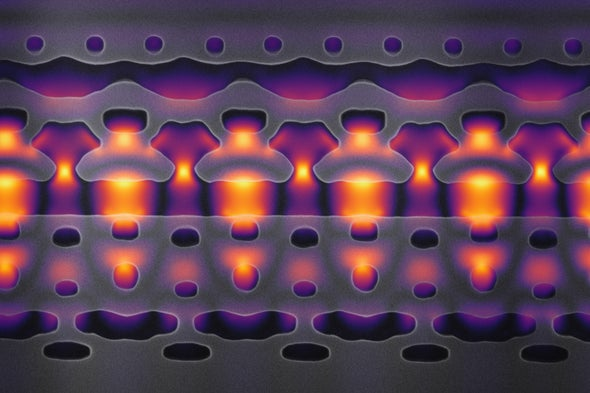The miniature particle accelerator can make fundamental observation, engine, and weapon technology possible.
The particle accelerator that size is less than mm. can make the new portable electron microscopes possible. The developers can use this technology in small ion engines. And there are also weapon applications that can benefit that technology.
The developer can use a small particle accelerator to drive other particles in the desired direction. Or they can act as an electron source for larger particle accelerators. Those small particle accelerators can also aim to impact particles precisely to the desired point in the particle's track.
Those miniature particle accelerators can shoot qubits or electron-shaped qubits in the quantum computers.
The smallest particle accelerator in the world accelerates electrons and ions to the speed of 100,000 km/s. The particle accelerator's size is less than 1 mm. Or sharper saying that particle accelerator's size is 0,2 mm. And that means it fits into a microchip. Researchers can use this particle accelerator to find the secrets of living cells.
This small particle accelerator can be used as an electron microscope that controls the material formation process. It can find things like anomalies in microchip structures. And it can be the portable or "briefcase" model of electron microscopes. That system can bring electron microscopes to field operations.
The developers can use portable miniature particle accelerators in the fundamental engine and laser solutions in the civil and military sectors.
If researchers can use that nano-size particle accelerator to create antimatter. That thing is the most fundamental system in the world.
An accelerator chip is shown on the tip of a finger along with an electron microscope image of the chip. (LaserFocusWorld.com/ Laser-based microchip particle accelerator can benefit industry and medicine)
"As electrons flow through this channel etched in a silicon chip, laser light (shown in yellow and purple) accelerates the particles to high speeds. Credit: Neil Sapra" (https://systemx.stanford.edu/news/2020-01-04-000000/new-particle-accelerator-fits-silicon-chip)
(https://systemx.stanford.edu/news/2020-01-04-000000/new-particle-accelerator-fits-silicon-chip)
Antimatter engines and laser systems can use this particle accelerator for making antimatter.
The antimatter causes extremely bright flashes when it annihilates with its mirror particles. In that process, annihilation turns particle-antiparticle pairs like electron and positron (anti-electron) into energy. That causes a bright flash. If those flashes are around laser elements like carbonite crystal or carbon monoxide laser they can be used as flash tubes to pump energy to that laser.
This kind of small nano-particle accelerator can also create positrons that can shoot into the air. That thing causes annihilation and the system can installed in missiles. Or it can used as antimatter mines. When the enemy comes to that area. The system bursts antimatter particles into the air.
But this type of system can make many other things than just act as a small and portable electron microscope. There is the possibility to use this small particle accelerator in fundamental ion engines. Engineers can use ion engines in saucer-shaped airships. Engineers can cover the entire saucer-shaped craft with this system.
And also, nano-size spacecraft and other flying systems can use this kind of engine solution. The system can use annihilation.
The particle accelerators turn electrons into positrons. Then the system can shoot them into the air. That forms thrust in nanotubes. And if those nanotubes are all around the craft, that gives it fundamental maneuverability.
The other version of ion systems is that the system pushes ion flow to the front of the craft. That thing can form a vacuum that pulls craft forward. In that system, the engine uses regular ions. The system ionizes the air around the craft. And then magnets or ions with the same polarity push those ions away forming a vacuum that pulls craft to it.
The nano-size particle accelerators can also operate as death rays. The death ray that Nikola Tesla developed was an electron- or so-called beta cannon. The beta cannon accelerates electrons that hit to target. Those electrons cause damage to chromosomes.
https://futurism.com/the-byte/tiny-particle-accelerator-fits-on-microchip
https://www.laserfocusworld.com/lasers-sources/article/16571391/laserbased-microchip-particle-accelerator-can-benefit-industry-and-medicine
https://systemx.stanford.edu/news/2020-01-04-000000/new-particle-accelerator-fits-silicon-chip






No comments:
Post a Comment
Note: Only a member of this blog may post a comment.